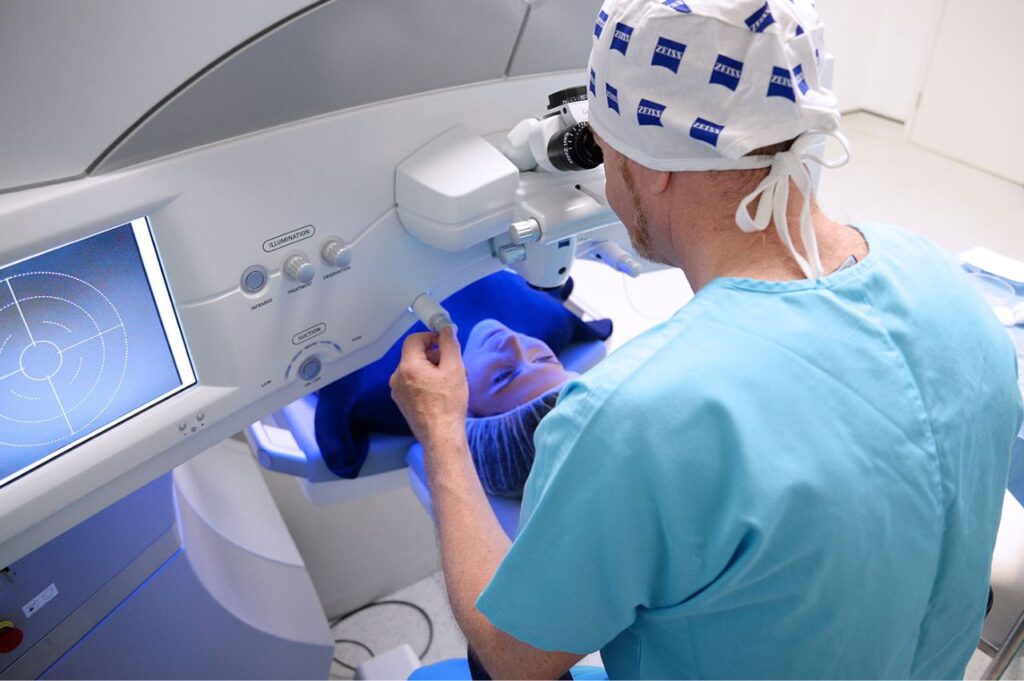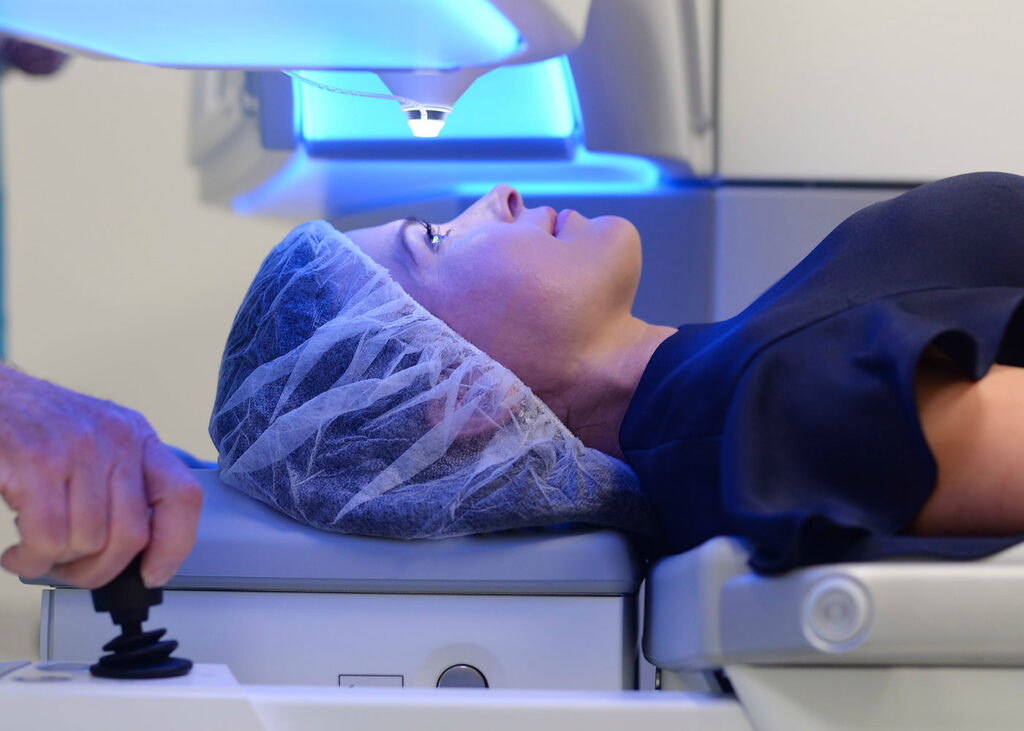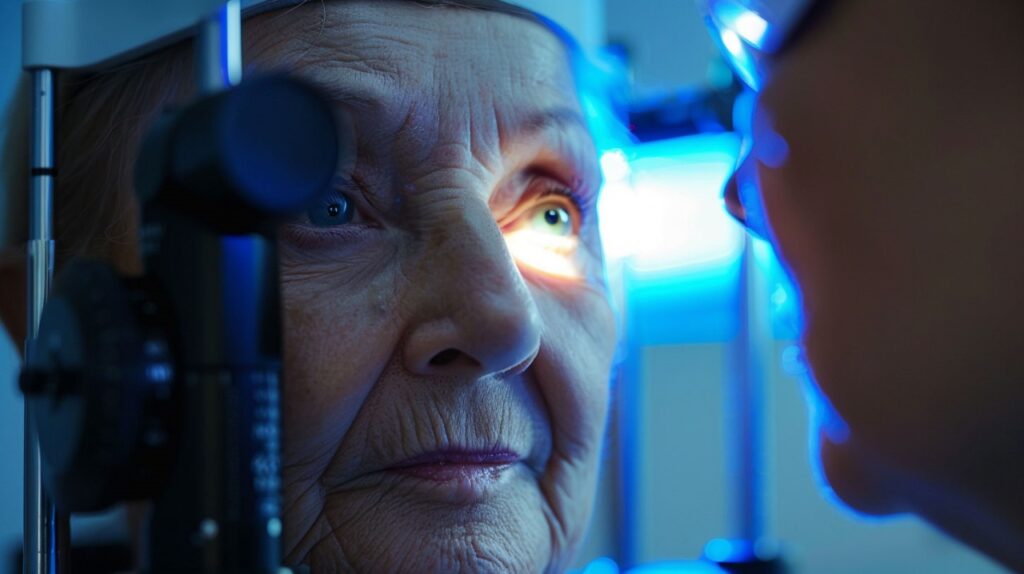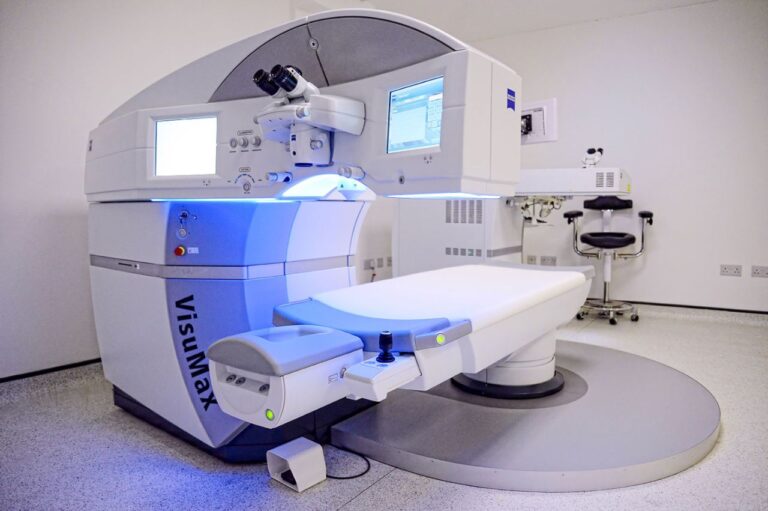In recent years, the field of ophthalmology has witnessed remarkable advancements, particularly in the domain of laser eye surgery technology. From pioneering techniques like LASIK (Laser-Assisted In Situ Keratomileusis) to innovative procedures such as SMILE (Small Incision Lenticule Extraction), modern laser eye surgery has revolutionised vision correction, offering patients unprecedented precision, safety, and efficacy. This article delves into the cutting-edge technologies driving the evolution of laser eye surgery, exploring their transformative impact on vision correction, patient experience, and the future of ophthalmic care.
Customised Treatments
Laser eye surgery has evolved to offer highly personalised treatments tailored to each patient’s unique eye anatomy and visual needs. Advanced diagnostic tools, such as wavefront technology and corneal topography, enable surgeons to create custom treatment plans that address individual aberrations and imperfections. By precisely targeting specific areas of the cornea, customised treatments optimise visual outcomes and minimise side effects, leading to enhanced patient satisfaction and long-term success.

Femtosecond Laser Technology
Femtosecond laser technology has emerged as a game-changer in the field of laser eye surgery, offering unprecedented precision, safety, and versatility. This ultrafast laser enables surgeons to create corneal flaps with remarkable accuracy in procedures like LASIK, enhancing flap quality and reducing the risk of complications. Moreover, femtosecond lasers facilitate advanced corneal reshaping techniques such as SMILE, allowing for minimally invasive vision correction with minimal disruption to corneal biomechanics.

Enhanced Safety Features
With continuous advancements in laser technology and surgical techniques, safety remains a paramount concern in laser eye surgery. Recent innovations have introduced enhanced safety features to minimise risks and optimise patient outcomes. From real-time eye-tracking systems that ensure precise laser delivery to sophisticated algorithms that mitigate potential complications, these safety enhancements provide added reassurance to both patients and surgeons. Additionally, improved patient screening protocols and comprehensive preoperative evaluations further enhance safety standards, ensuring that laser eye surgery remains a safe and effective option for vision correction.

Presbyopia Treatment Options
In response to the growing demand for presbyopia correction, laser eye surgery technology has expanded to offer innovative treatment options for patients with age-related near vision loss. Multifocal and accommodating intraocular lenses (IOLs), combined with advanced laser techniques such as presbyLASIK and corneal inlays, provide customizable solutions to address presbyopia while maintaining visual quality at various distances. These advancements in presbyopia treatment options offer newfound freedom and independence to individuals seeking to reduce their reliance on reading glasses or bifocals.
Artificial Intelligence Integration
The integration of artificial intelligence (AI) into laser eye surgery technology represents a significant milestone in improving treatment outcomes and optimising surgical efficiency. AI-powered algorithms analyse vast amounts of patient data and surgical parameters to predict postoperative results, refine treatment protocols, and personalise surgical planning. By harnessing the power of AI, surgeons can make data-driven decisions, streamline workflow processes, and continuously improve the quality of care delivered to patients undergoing laser eye surgery.
These recent advancements collectively demonstrate the ongoing evolution of laser eye surgery technology, paving the way for safer, more precise, and individually tailored treatments that redefine the standards of vision correction.
The Future Of Laser Eye Technology
The future of laser eye surgery holds immense promise, driven by ongoing research, technological innovation, and a growing understanding of ocular biology. One exciting prospect is the refinement of existing techniques to achieve even greater precision and predictability in vision correction. Advancements in laser technology, coupled with sophisticated diagnostic tools and imaging modalities, will enable surgeons to tailor treatments with unprecedented accuracy, addressing subtle aberrations and optimising visual outcomes for each patient. Additionally, the integration of artificial intelligence and machine learning algorithms into surgical planning and execution processes will further enhance the efficacy and safety of laser eye surgery, empowering surgeons to make data-driven decisions and continuously refine treatment protocols.

Furthermore, the future of laser eye surgery may witness the emergence of novel treatment modalities and alternative approaches to vision correction. From gene therapy interventions targeting inherited ocular conditions to regenerative medicine strategies for restoring damaged corneal tissue, researchers are exploring innovative avenues to address a wider range of visual impairments. Additionally, advancements in nanotechnology and bioengineering hold the potential to revolutionise intraocular lens design and implantation techniques, offering enhanced visual quality and durability. As interdisciplinary collaborations continue to flourish and scientific knowledge expands, the future of laser eye surgery appears poised to unlock new frontiers in ocular health and revolutionise the landscape of vision correction.










